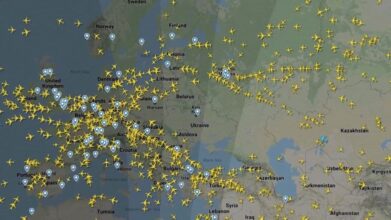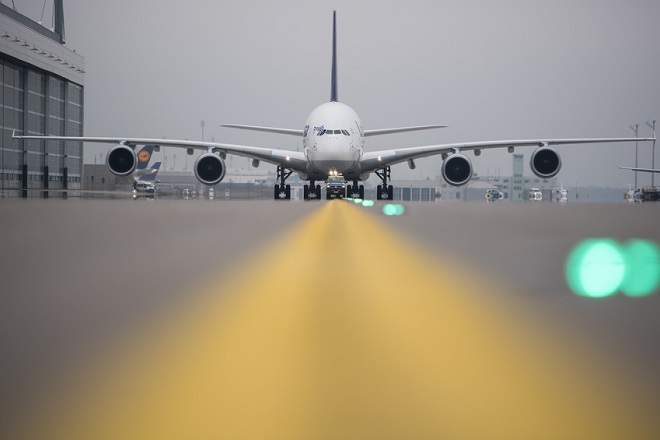Greece issued an aviation directive banning all passenger flights from flying in Ukraine airspace for the next three months, until May.
In its NOTAM, the Hellenic Civil Aviation Authority (HCAA) said that all civil aircraft are strongly recommended to avoid the airspace on the Ukrainian-Russian border.

At the same time, dozens of foreign airlines have suspended Ukraine flights.
“The presence and possible use of a wide range of ground and airborne warfare systems poses a high risk for civil flights operating at all altitudes and flight levels,” the European Union Aviation Safety Agency (EASA) said, outlining that Ukraine’s skies and airspace in Russia and Belarus within 100 nautical miles of borders with Ukraine could pose risks.
“In particular, there is a risk of both intentional targeting and misidentification of civil aircraft,” the EASA said.
The EASA a later update on a broader area of Russian airspace, advising airlines to “exercise caution” when flying in air traffic regions controlled from Moscow or Rostov-on-Don.
The U.S. Federal Aviation Administration expanded an area in or near Ukraine where U.S. airlines cannot operate.
Heightened notice of the risks conflicts pose to civil aviation has been taken by the aviation industry since Malaysia Airlines flight MH17 was shot down over eastern Ukraine in 2014.
EASA said Russia’s defence ministry had sent Ukraine an urgent message warning of a high risk to flight safety due to the use of weapons and military equipment, and asked Ukraine’s air traffic control to stop flights.
Websites, which had shown multiple intelligence-gathering flights over or near Ukraine before the escalation as the West showcased support by transmitting detectable signals in recent weeks, showed empty space as civil flights halted and analysts said any military flights went dark.



